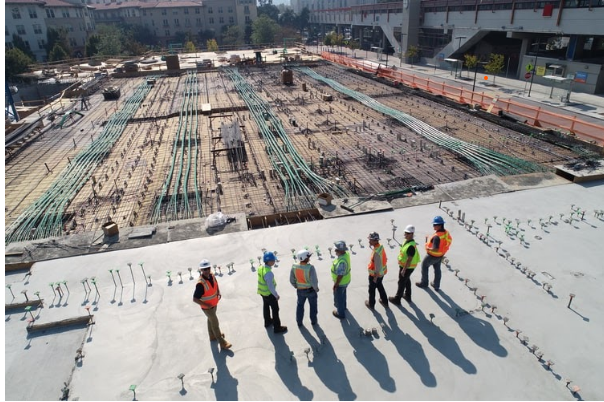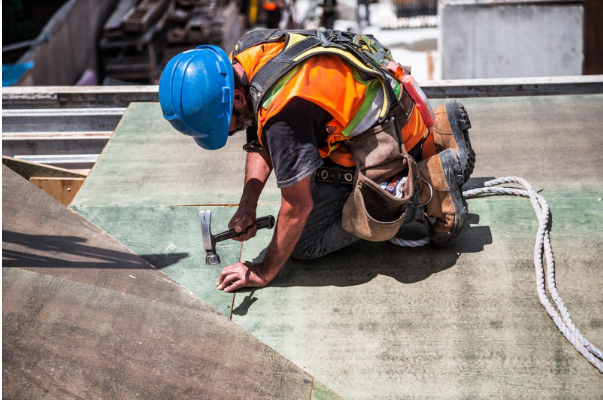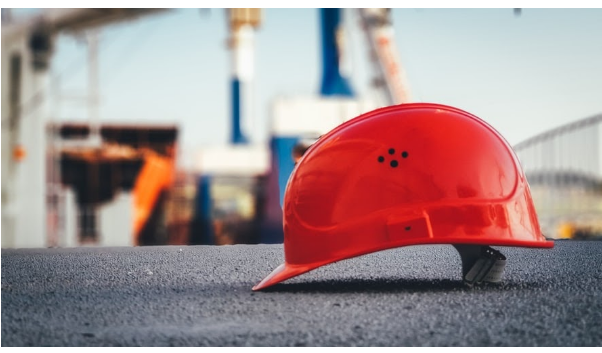Every construction project faces risks on several fronts, from safety and health risks to needed changes from the original plan. Above all that, there are new government regulations and rules that need to be followed. And let’s not forget about the constant payment issues that sometimes restrict a construction business’s capability to meet the requirements and proceed with operating.
All these things might affect the way your construction business works, and that’s why you need to manage them carefully. As a construction specialist, you probably are aware that construction companies can only succeed on a solid foundation of planning and organization.

Photo by Scott Blake from Unsplash
Therefore, during the earliest stages of your company’s growth, you need to learn about usual risks which are inborn to the sector. Then, you can be confident as you develop your business further. As your construction company undertakes new projects, you will have to put multiple systems in place to avoid these risks and protect your business operations.
So, continue reading below to find out the best four ways for how to protect your construction business and minimize the risks.
Reduce Your Risks By Utilizing Construction Insurance
Among the best ways to protect yourself in the construction business, is by having an adequate insurance policy. There are different types of construction insurance that will protect your business during the stages of your construction projects and several factors affect what kind of insurance you will need for your projects. Usually, the type of insurance differs depending on what sort of property needs coverage. Besides, the insurance policies vary depending on whether you are a supplier, a contractor, or a subcontractor.
For example, one of them is the general contractor’s liability insurance which will cover your financial risk in the event of property damage or bodily harm to third parties throughout the process of your operation. Some states demand every contractor to have a basic level of liability insurance to win some specific contracts.
In addition, you can consider having a builder’s risk insurance or also called course of construction insurance, which will provide coverage particularly for property damage on-site. It usually covers the foundation, temporary structures, building materials, and outdoor fixtures. Also, let’s not forget about the workers’ compensation insurance that will cover your employees in case of an injury. It can cover medical costs, recovery expenses, and legal fees if the injured employee sues you. When you allocate your funds, don’t avoid investing in insurance policies because they have the potential to save your business in case of an accident or other mishap.

Protect Your Construction Site The Best Way Possible
There are certain risks to every construction project that is far beyond the stakeholders’ control. Construction sites are especially vulnerable to damage from fire (as a result of natural causes), floods, and stormy weather since some parts of them are unprotected. That’s why it’s crucial that you install control systems in place to reduce those risks.
Make sure to install a fire suppression system and prohibit smoking on the construction site right from the beginning. Inspect and maintain temporary lighting and wiring constantly, and regularly check potential sources of water damage, including plumbery and HVAC systems.
Install physical barriers to avoid trespassing on your site. Connect your surveillance systems to alarm systems adequately. Employ competent and assured security guards. Brace your building materials and equipment to reduce damage during stormy weather. And last but not least, develop a disaster-prevention checklist and relocating plan.
Start Utilizing The Latest Technology Trends In The Sector
Once construction companies aren’t able to complete a project before a specific date, they might need to pay penalties. Even big corporations with a competent crew and strong management face problems with productivity, and you can find yourself in the same situation because of limited resources.
Anyway, you have few options for addressing these kinds of risks, but you’ll find that technology is usually the best solution for boosting productivity. Plenty of construction companies are slow when adopting new technologies, so investing in them sooner will provide you a competitive edge and help you avoid many risks.
Consider starting using smartphones or tablets with construction-related apps on the job site that will allow for digital data entry even on the field. Changing all your manual documentation to a digital alternative will also accelerate your business processes, which is also a great way to increase productivity.

Photo by Umit Yildirim from Unsplash
Comply With All The Required Standards In The Industry
Construction comes with occupational risks that aren’t always easily avoidable. When your employees are operating heavy equipment and power tools during long, hot days, the chance of an accident goes up. Consequently, it’s crucial to take steps to better worker safety on your construction site.
When handling this kind of issue, it’s best to take the necessary proactive measures rather than reactive ones. For instance, you should ensure that your equipment is secure and your employees have received adequate training. Additionally, it’s essential that you comply with the OSHA standards on your work site.
If you want to make sure your workers are safe, you can use restraint systems, fall arrest systems, guardrails, and safety nets are great options. Precautions like these are a high priority since falls constantly account for the biggest number of deaths in the construction industry every year.
Final Words
If you are committed to building a successful construction company, you’ll need to consider a lot of things thoroughly. Among other things such as differentiating yourself from your competitors and acquiring the proper assets, you have to protect your business from robbery, penalties, damage to equipment or etc. Thankfully, you can overcome these obstacles if you take a systematic approach to risk evaluation as mentioned above.






